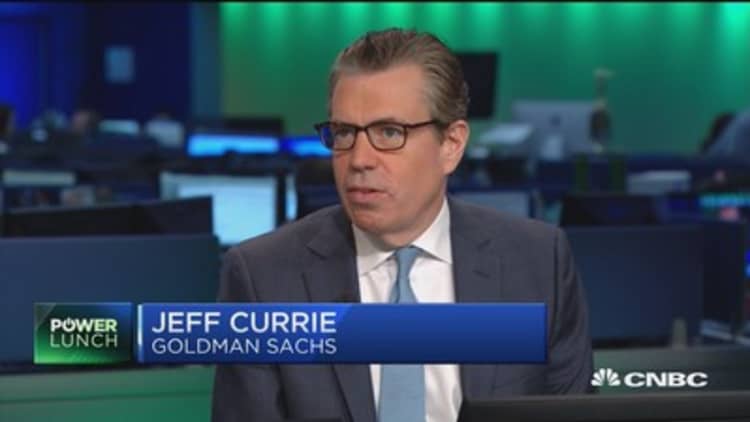
Crude oil prices continue to drain and drilling continues to increase, but a Goldman Sachs commodities analyst says the problem with the market is a glut of money.
"There's not too much oil in this market, there's too much money in this market," said Jeff Currie, global head of commodities research at Goldman, on CNBC's "Power Lunch" Wednesday. He cited the recent discovery of more than one billion barrels of crude oil in Mexico as an example of the investments being made to search for oil.
Currie said the oil market is struggling to find an equilibrium between supply and demand, and that it's become more difficult to predict oil breakeven prices, which have fallen below the $50 to $55 range Goldman estimated in 2016.
"I'd like to see some volatility in this market," Currie said when asked about the likelihood of a market crash, though he conceded that the probability is "unfortunately" very low.
In the beginning of 2017, the bank forecast a three-month oil target price of $55 per barrel but revised that number down to $47.50 in late June. West Texas Intermediate crude oil traded at about $45 on Wednesday.
Currie said a handful of unanticipated factors over the past few months led Goldman to temper its bullish prediction, including the re-emergence of Nigeria and Libya in the oil market and weather patterns that "did not support the demand for natural gas in general."
Winter temperatures in the eastern United States, for instance, are expected to have been about 3 percent warmer than the average of the five winters before last, according to the U.S. Energy Information Administration.
Goldman did anticipate the response to shale, Currie said — just not the high velocity. He said shale trading defied expectations for the same reason agriculture traders only trade "near-term" crops: Bidding up the long-term price of one commodity will cause producers to neglect other commodities, leading to a self-defeating market.
"What happened here is the market went out and traded past the supply cycle of shale, which is three to six months," Currie said. "Those higher prices gave the incentive that created that velocity."
Oil drilling increased in the Permian region and the Gulf of Mexico in 2016, according to the EIA. The commodity's price has fallen more than 17 percent since February.
A research note from Goldman on Tuesday cautioned that oil prices could fall below $40 a barrel unless investors see a clear reason to start buying the commodity.
"We continue to believe that there is another opportunity for OPEC to increase the cuts, but that this should be done in a 'shock and awe' manner, with little public announcement," Goldman said.
Currie said Goldman forecasts a longer-term oil price of $50 a barrel.


